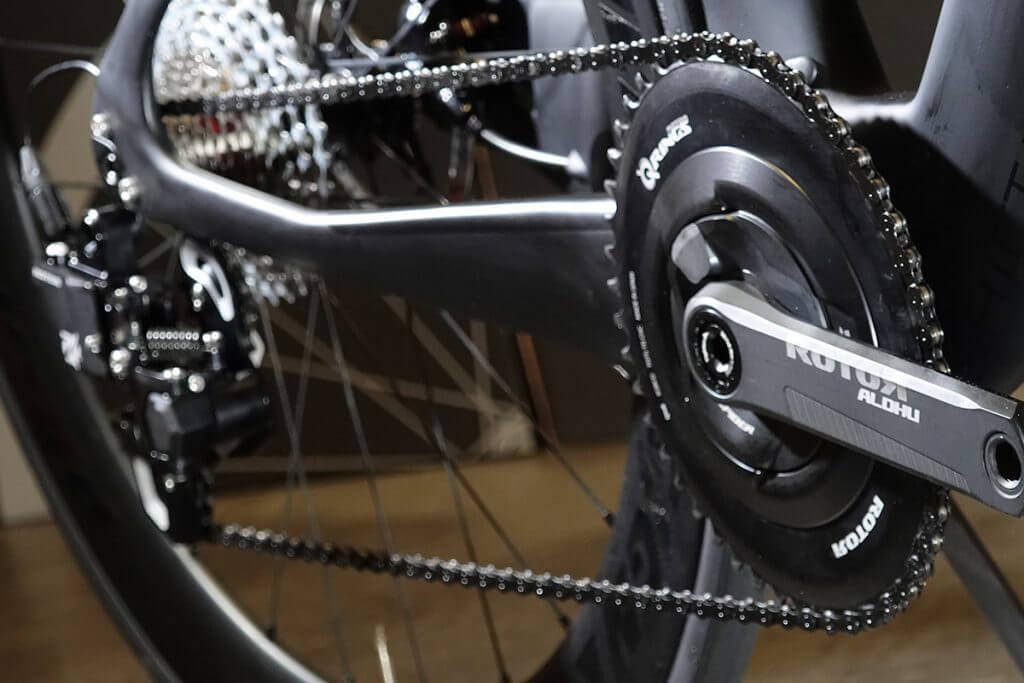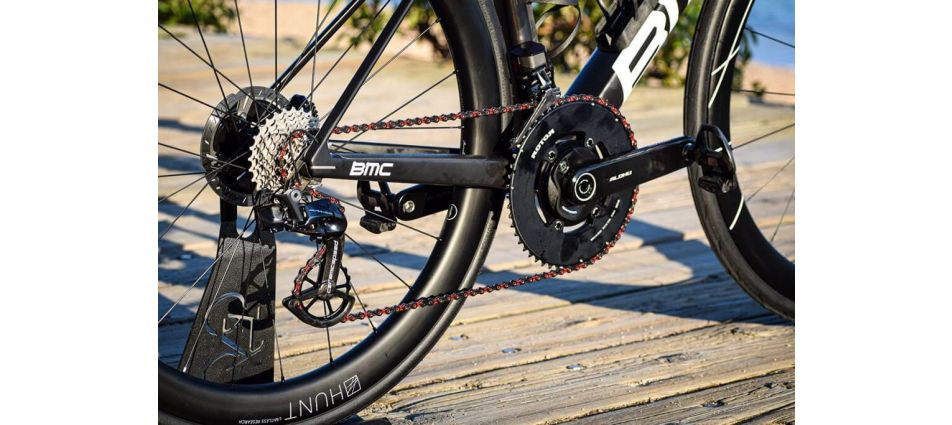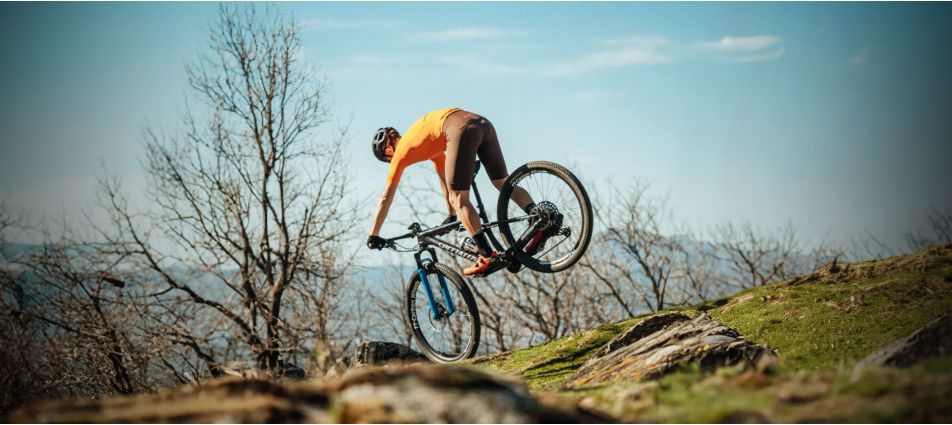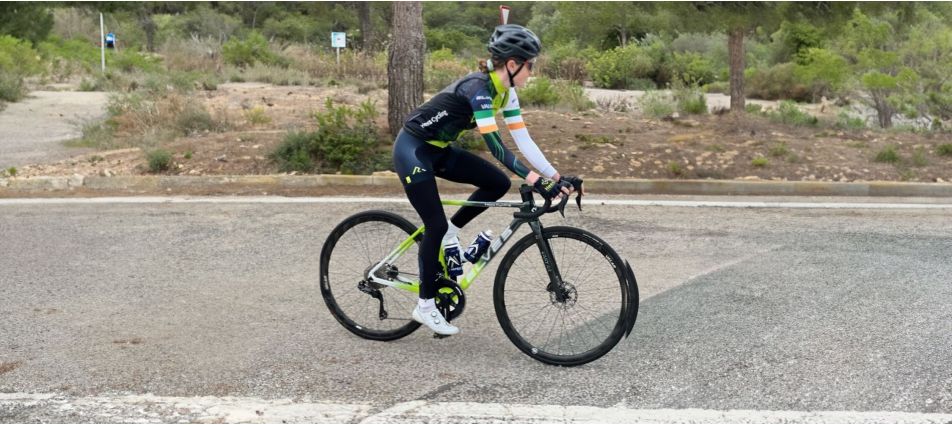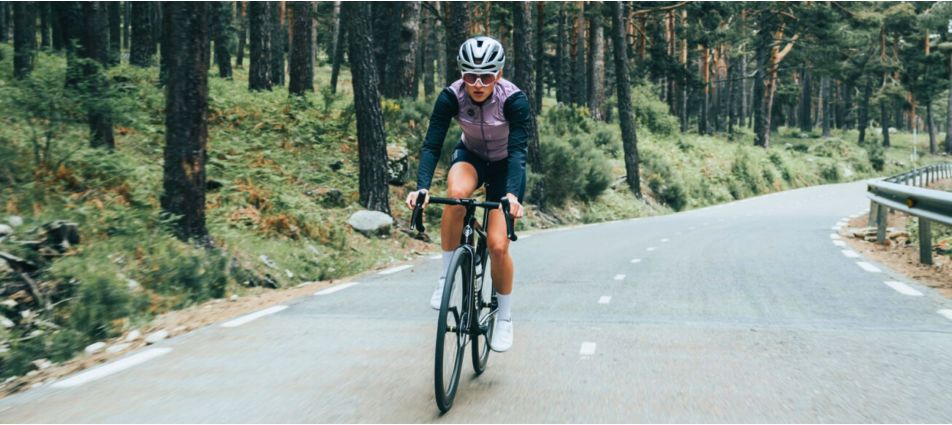Is Cross-chaining a problem today?
On road bikes, double chainrings have been almost a standard in groupsets, but for MTBs until a few years ago, the triple chainring was the norm. From there it went to the double and then to the single ring. The single chainring, both in mountain, gravel and in some exceptions in time trial and triathlon models, has completely eliminated the problems of cross-chaining, since the groupsets and the frames are optimized to use all the cogs of the cassette, be they 11, 12 or 13 as in our 1x13 road and mountain groupset.
The importance of Chainline
We are sure that on many occasions you have heard that you have to respect the chainline in the transmission. The chainline being the distance that exists between the midpoint of the single chainring, or the midpoint in a double or triple chainring, with respecto to the midpoint of the bike frame. That is, with respect to the axis of symmetry of the bike in a vertical plane. To explain it in simpler words; Imagine that you draw an imaginary line right in the middle of the chainring and in the middle of the cassette, and you draw another line dividing your drawing in two vertically. The distance between those two lines is the chain line.
When that chainline is not respected, the chain can run too crooked and affect not only the smoothness of the gear changes, but when forcing it too much, can even make it can break. Therefore, if you change the transmission, you always have to take into account the chainline of your bike, so as not to modify it. Depending on the frame, you will be able to play around with the BB spacers a bit, but that won´t always be possible. When in doubt, keep the same chainline.
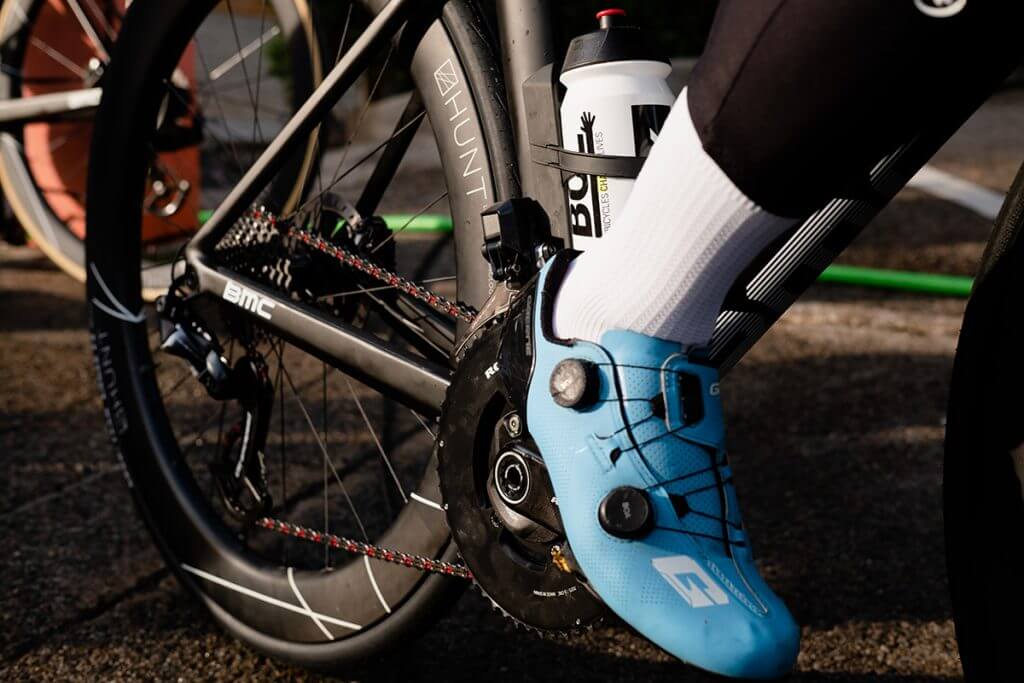

When we talk about cross-chaining, we are referring almost exsclusively to road and gravel bikes with a double chainring. Years ago, transmissions failed to work with the chain too crooked, whether you used the large chainring with the largest sprocket, or if you used the small chainring, with the smallest sprocket. These combinations put a lot of strain on the chain and even made it run against the derailleur.
At present, manufacturers do not recommend using these combinations too much, since, although today´s groupsets are much more advanced and have more flexibility in terms of the use of all sprockets, with both chainrings, this type of use will make pedaling not as efficient.
The chain, moving more diagonally, will not enter or exit the teeth of the chainrings and the sprockets the same, creating more friction, less precision, more noise and if you use it under a lot of pedaling power, you can even break it. In addition, it creates greater wear on all transmission components due to increased friction.
On the other hand, in these combinations, especially in the one with a large chainrings with the largest sprocket, the rear derailleur arm will be stretched too far, making the pedaling flow very noisy and inaccurate. The chain, although long enough for that combination, puts a lot of strain on the derailleur body and arm.
An important pìece of advice when it comes to maintaning the precision of your groupset completely and not having problems with cross-chaining, it is best to never use the largest sprocket with the large chainring and the second cog only on occasions (or at least when applying little force when pedaling) and with the small chainring, do not use the smallest cog or the next one up.
By doing this, you will ensure that the chain never becomes too twisted, and will not rub the derailleur whilst making the shifting precision and smoothness as effective as possible. Another option you have is to switch to any ROTOR´s 1x13 systems, in which you will have no problem using the 13 available speeds, without fear that the gear changes will not work as they should.
